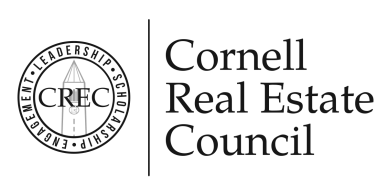How to Ease Tax Burden on Heirs

Ben Tapper. Image courtesy of Lee & Associates NYC.
“By properly structuring the ownership and cash-flow of a portfolio, an owner can ensure that the wealth they built can be passed on to multiple generations,” says Ben Tapper of Lee & Associates NYC.
Over the course of the last couple cycles in the New York City real estate market, we have seen unprecedented appreciation in property values throughout most of the city and surrounding areas. While this has been a boon for property owners, especially for those who regularly buy and sell, it has created a first-world dilemma for many long-term private investors and legacy property owners. By acquiring assets and depreciating them over long periods of time, significant tax implications arise.
The appreciation has allowed longer-term owners to continue to refinance their properties, often borrowing more than the cost of original construction or acquisition. These continued cash-out opportunities have provided equity to owners and the ability to fund additional investments or lifestyle purchases, and potentially both. The downside of this ongoing appreciation and cash-out refinancing cycle is the impact on an owner’s tax basis. Refinancing a property multiple times combined with annual depreciation will hasten the arrival of a zero tax basis, if not a negative basis, at which point the capital gain will be greater than the sale price of the asset.
While a tax basis can be stepped up for heirs upon the death of the owner, doing so comes with some major negative implications. First, somebody actually has to die in order to achieve the step up in basis (morbid, but true). Second, the estate tax needs to be paid within nine months of the date of death of the owner. Third, if the property has continued to be refinanced and the debt is already at an aggressive loan-to-value percentage, there may not be enough imputed equity left to refinance for enough to cover the estate tax needs.
In this scenario, the heirs who were set to inherit some valuable real estate might have to sell the property in order to have enough equity to cover the estate tax burden. Real estate brokers like to handle estate sales, because there is a definitive transaction at the end of the process given the new owner’s need for cash. However, if a plan is put in place before the original owner dies, many of these negative implications can be avoided.
One way to diminish the potential need to sell is by not over-leveraging assets. While this is nice in theory, a number of owners live off their properties and need to continually refinance to cover their growing costs and/or growing number of family members being supported by the asset. If possible, maintaining conservative leverage helps provide a safety net against a large estate tax burden by providing additional room to refinance to meet the tax need. However, this strategy is not available to all owners. An alternative option that has been gaining in popularity and achieved a lot of success is the creation of a long-term leasehold. This structure has a number of tax advantages, as well as generational wealth preservation and cash flow certainty.
A leasehold offers a number of benefits, including predictable income, ability to leverage the income stream if needed, avoidance of capital gains, and removal of political risk from new and changing regulations. This last item is especially important here in New York.
Many property owners are also concerned with having their heirs receive a large windfall of cash when a property sells. These heirs may or may not be real estate-savvy and burn through the cash in a matter of years. By putting in place a long-term income stream, an owner can increase the odds of wealth preservation for future generations, while still preserving the ability to create a large liquidity event either through a sale or a refinancing.
When the property does pass from one generation to the next through the estate process, the heirs will receive a stepped-up tax basis, at which point a sale will have materially reduced capital gains tax implications. This process can be repeated over and over again for multiple generations, thus allowing the same property to be depreciated multiple times.
By properly structuring the ownership and cash-flow of a real estate portfolio, an owner who has wisely acquired and retained properties can ensure that the wealth they built can be passed on to multiple generations. Through proactive planning, the sheep can be sheared for decades without ever having to skin it.
Note: Ben Tapper is a Senior Managing Director at Lee & Associates NYC, specializing in investment sales and capital markets. He received his B.A. from Cornell University in 1998. This article was written by Ben Tapper and published with his permission.




